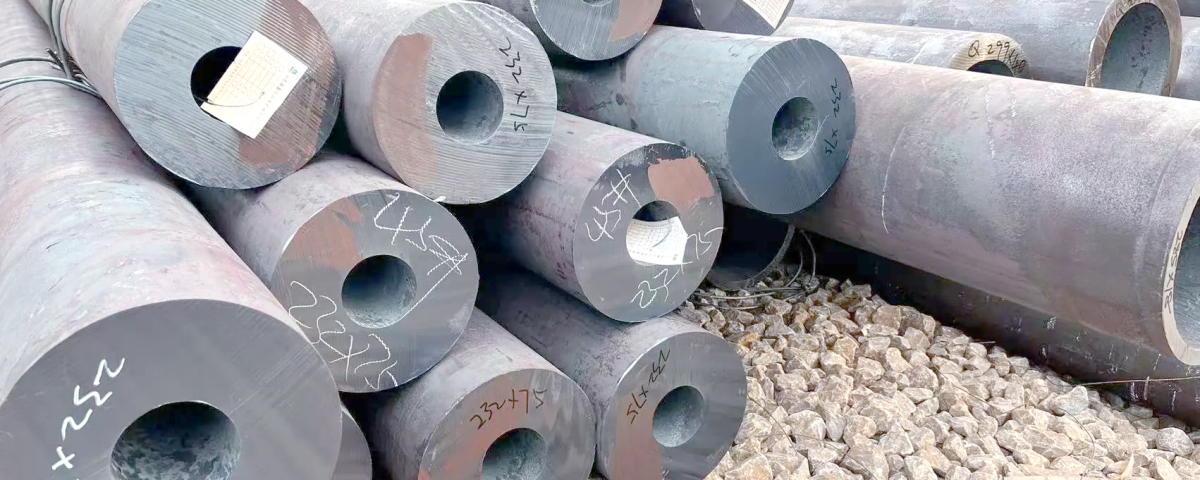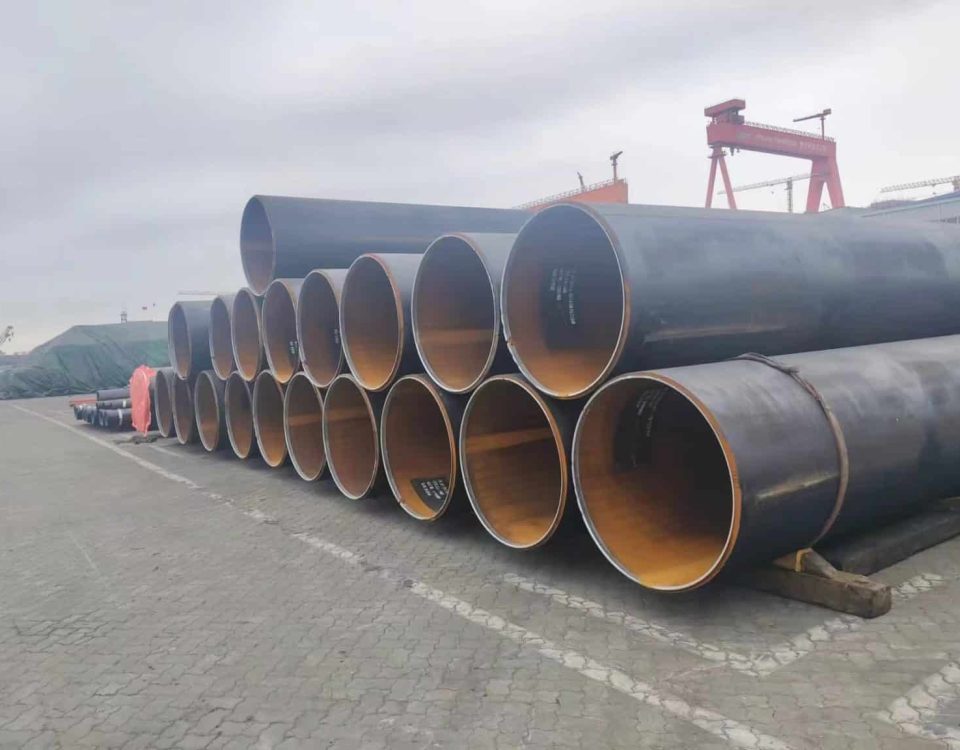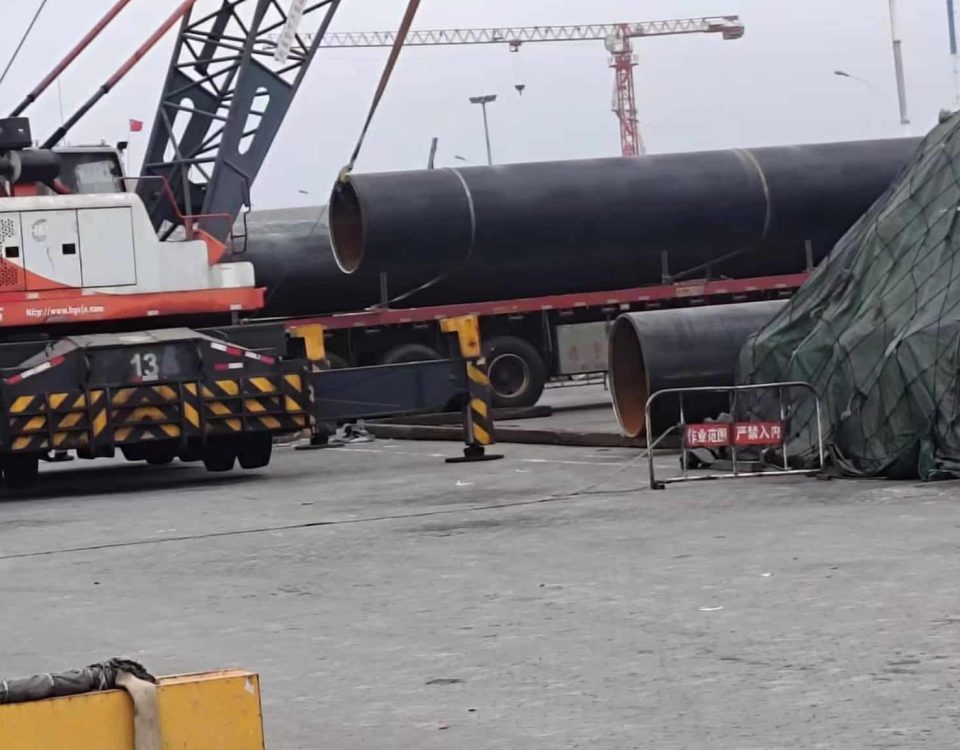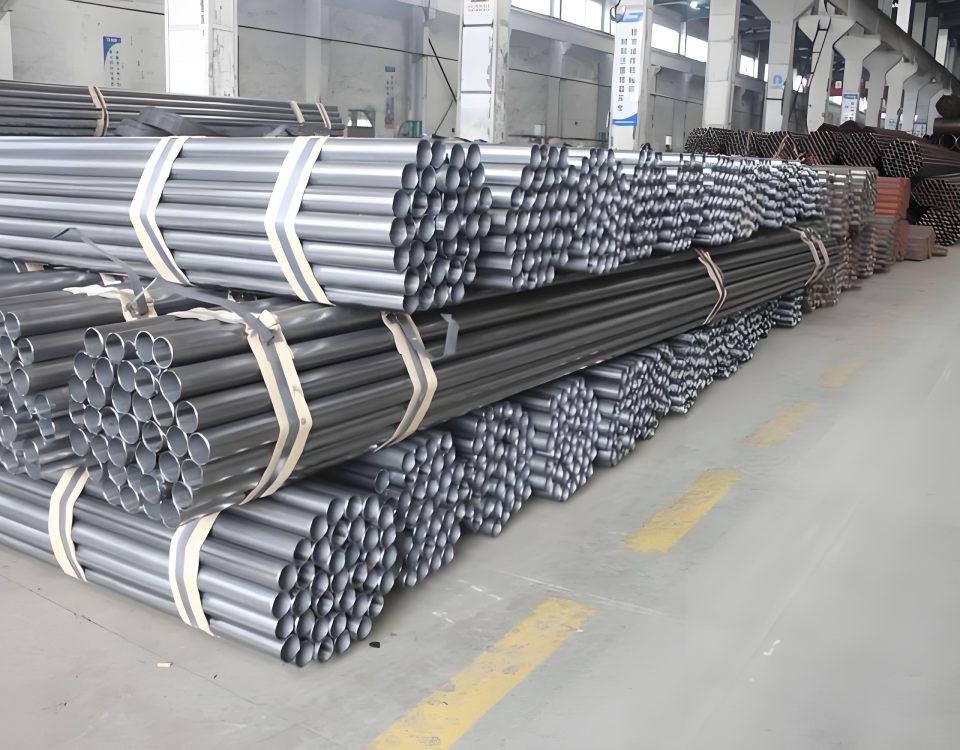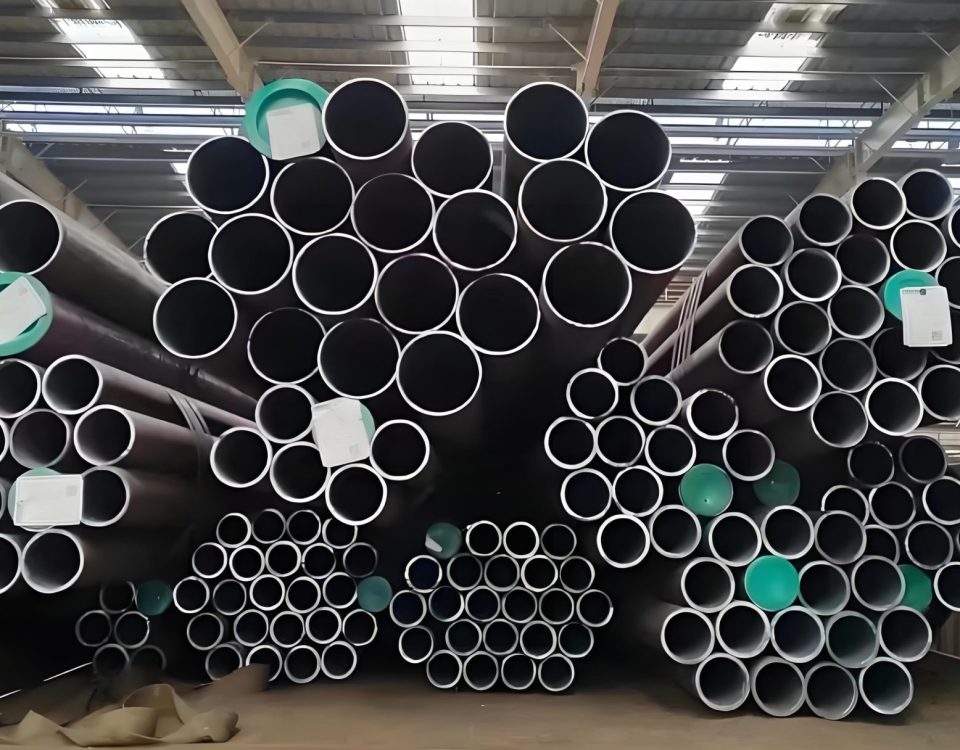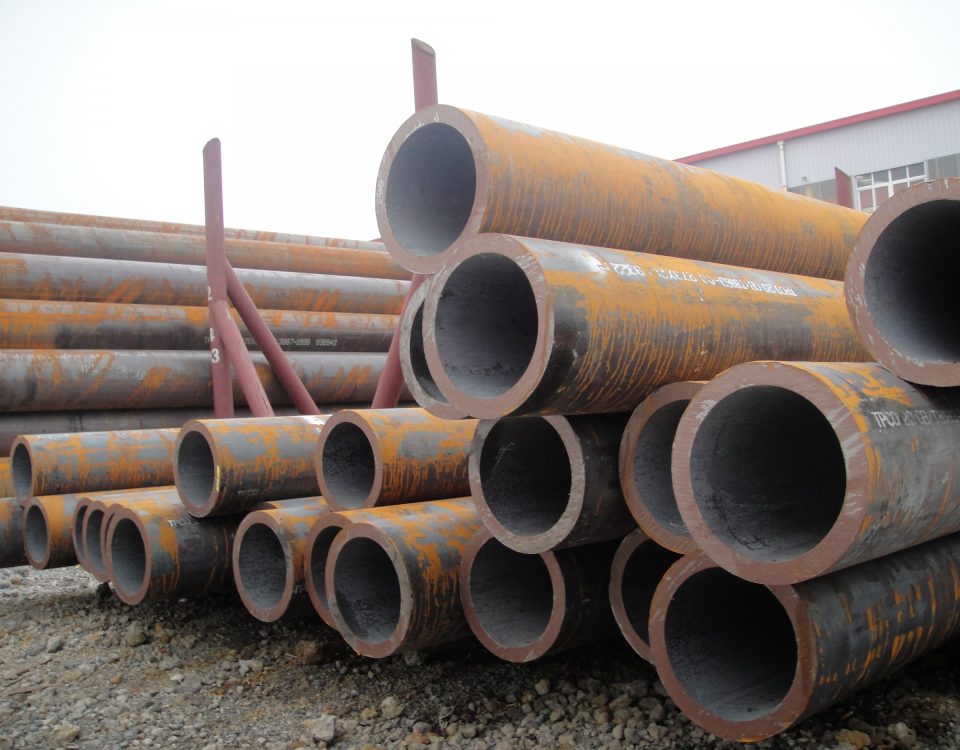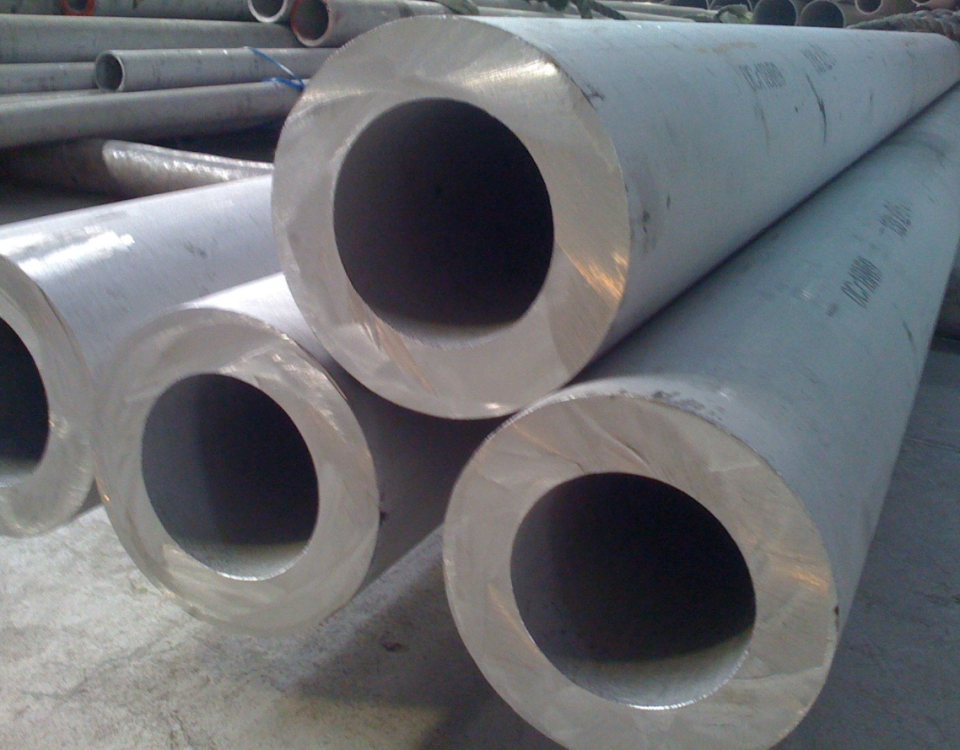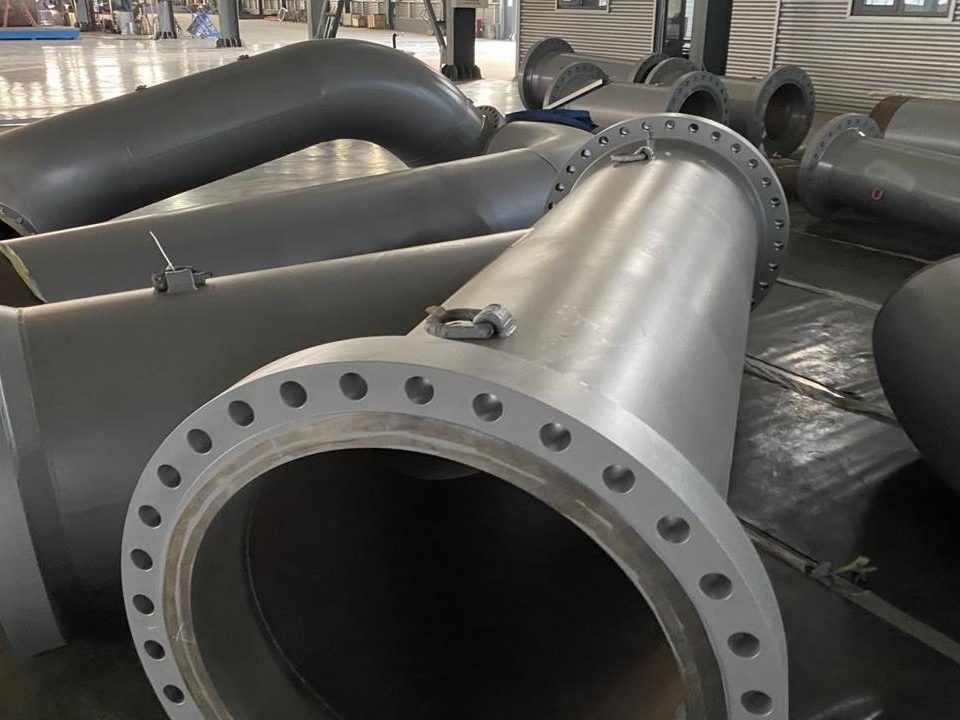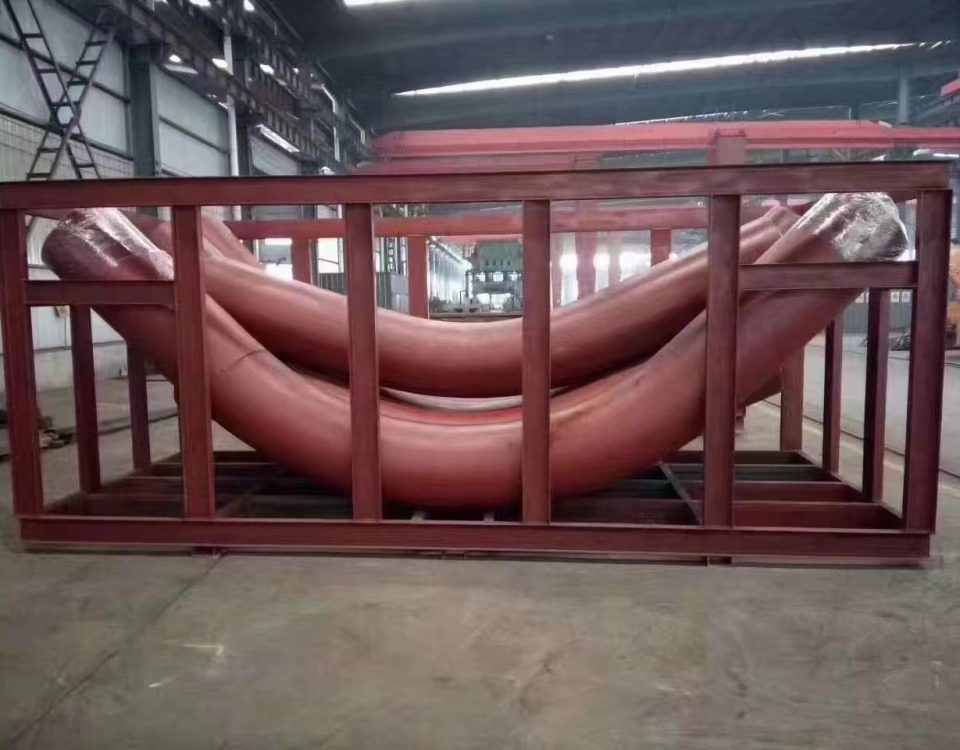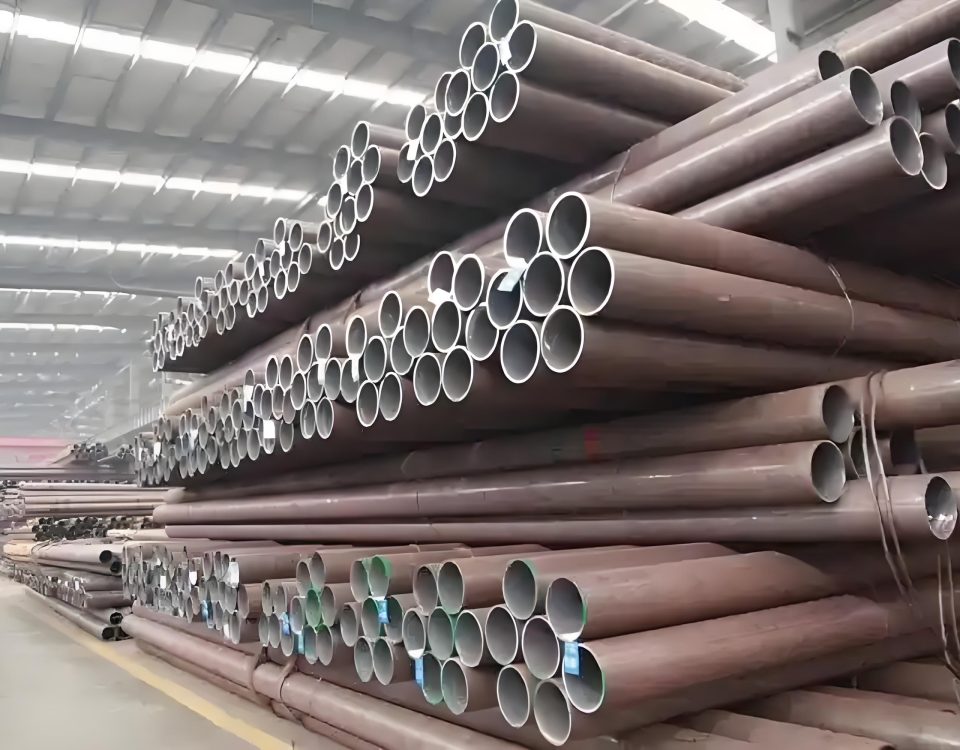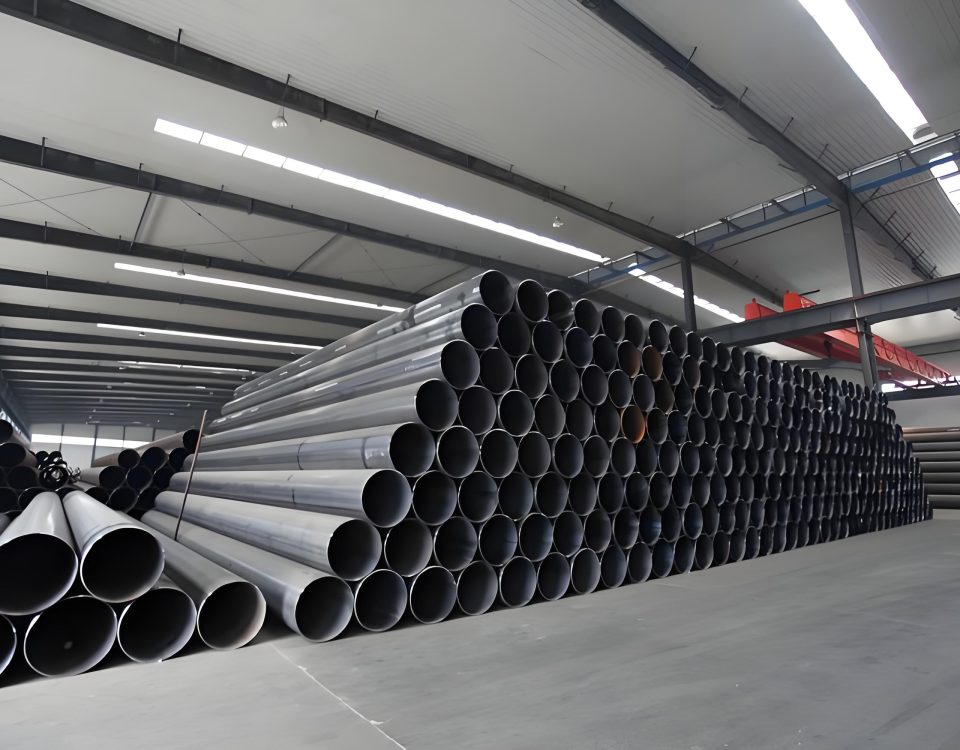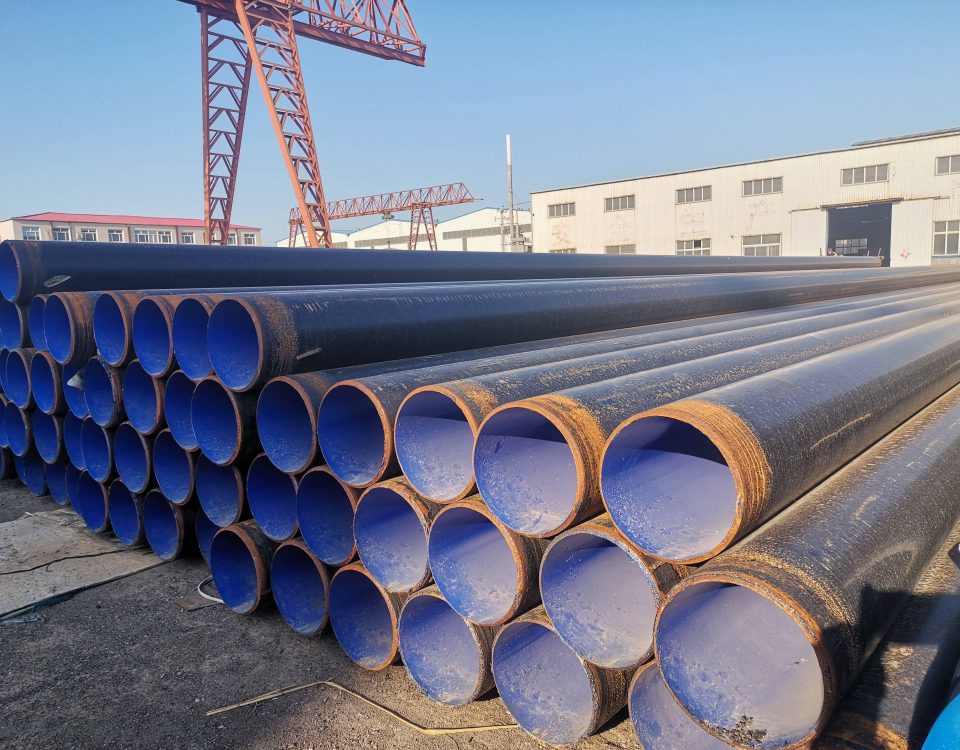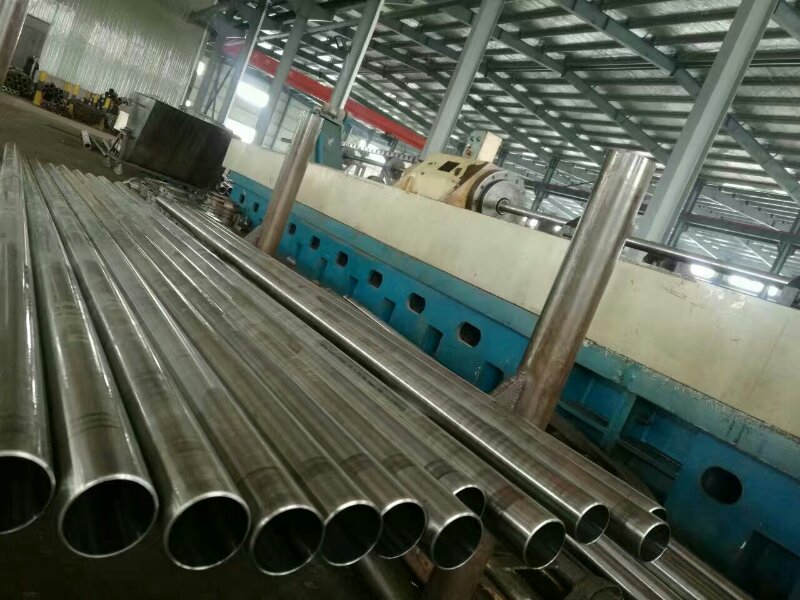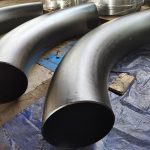
ASTM A860 WPHY 52 and WPHY 65 Carbon Steel Bend Fitting
October 12, 2025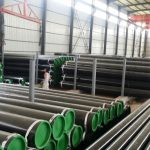
X70 Steel Pipelines – Technical Measures for Welding and Corrosion Protection
October 26, 2025The Engineering of Mass and Pressure: A Deep Dive into Heavy Wall Steel Pipe Grades ST37, 15Mo3, and C45
The term **Heavy Wall Steel Pipe** does not refer to a single material or a single standard; rather, it describes a critical design component—a boundary condition where the necessary thickness of the pipe wall ($>10\%$ of the outer diameter or often simply $>25 \text{ mm}$ to $50 \text{ mm}$ actual thickness) introduces unique engineering and metallurgical challenges. The selection of the material for this heavy-duty application is dictated entirely by the service environment: is it high pressure, high external load, high temperature, or high mechanical stress? To illustrate the vast and often conflicting demands placed upon these massive components, we must delve into three metallurgically distinct grades: **ST37** (a general structural workhorse), **15Mo3** (the champion of high-temperature pressure containment), and **C45** (a medium-carbon steel built for mechanical strength).
The engineering imperative of the heavy wall is one of immense consequence. Manufacturing these thick-walled components pushes the limits of steelmaking, rolling, and forming technology. Achieving precise dimensional tolerances becomes exponentially difficult, and the material itself must be free of internal flaws that could become catastrophic crack initiation points under the heavy stress of service. These pipes and tubes are the unyielding backbones of industrial infrastructure, functioning as thick-walled pressure headers in power plants, protective casings for deep drilling, or as the central shafts in large-scale mechanical systems. By examining the chemical composition, mechanical properties, and testing protocols for ST37, 15Mo3, and C45, we gain a comprehensive understanding of the precise specialization required for extreme engineering environments.
I. The Heavy Wall Imperative: Manufacturing and Metallurgical Challenges
Before examining the specific grades, it’s essential to understand the unique challenges inherent in producing **heavy wall** tubular goods. Simply scaling up manufacturing processes designed for thin-walled pipe is insufficient; the sheer mass of the metal fundamentally changes the dynamics of production and quality assurance.
Manufacturing Complexity and Dimensional Control
The majority of heavy wall pipes, especially those intended for pressure service (like 15Mo3), are produced using the **seamless** method—either **Hot Extrusion** or the **Plug Mill** process. During the hot piercing and rolling stages, the huge volume of metal must be worked uniformly. Achieving tight control over the **Wall Thickness (WT)**, known as **eccentricity**, is extremely difficult in thick sections due to the natural movement of the internal plug and the massive rolling forces involved. For non-critical structural applications (ST37) or welded pipe (often large diameter), the **Submerged Arc Welding (SAW)** process is used. In SAW, the extreme thickness requires multiple weld passes (sometimes dozens), necessitating rigorous control over pre-heating and inter-pass temperature to prevent hydrogen cracking and ensure uniform fusion throughout the entire thickness of the weld joint.
Metallurgical Integrity in Mass
The slow cooling rate inherent to thick cross-sections can lead to undesirable microstructures. For **15Mo3**, this affects the stability of the carbide precipitates that give the steel its creep resistance. For **C45**, the slow cooling prevents the material from achieving its full potential hardness unless meticulously quenched and tempered. Furthermore, non-metallic inclusions (impurities) that might be harmless in a thin pipe can concentrate in the center of a thick-walled pipe, becoming large, critical defects under heavy load. Therefore, material cleanliness (low sulfur and phosphorus content) is an exaggerated priority for heavy-wall components, often surpassing the minimum standard requirements.
| Designation | Reference Standard (EN/DIN) | Material Type | Primary Heavy Wall Application |
|---|---|---|---|
| ST37 | EN 10025-2 (S235JR) | Non-alloy Structural Steel | Low-pressure casings, foundation piles, structural supports, general mechanical tubing. |
| 15Mo3 | EN 10222-2 / EN 10216-2 (16Mo3) | Low-Alloy Creep Resistant Steel | High-temperature/high-pressure steam headers, piping in power plants and refineries. |
| C45 | EN 10083-2 (C45) | Non-Alloy Engineering Steel | Heavy-duty hydraulic cylinders, rollers, shafts, mechanical components where high surface hardness is achieved through heat treatment. |
II. The Three Pillars of Heavy Wall Material Science
These three grades represent fundamentally different metallurgical approaches to solving the problem of heavy wall construction. Their distinct chemical compositions predetermine their suitability for structural, pressure, or mechanical service, respectively.
ST37 (S235JR): The Ductile Structural Backbone
The ST37 designation, largely superseded by the European standard **EN 10025 S235JR**, represents the most basic structural heavy wall material. It is a low-carbon, highly ductile steel with a guaranteed minimum yield strength of $235 \text{ MPa}$. In heavy wall form, it is used where thickness provides the necessary stiffness and load-bearing capacity, but pressure and high temperatures are not factors. Think of large-diameter, thick-walled casings for subterranean pipelines, structural piling, or general mechanical tubing where **weldability** and **low cost** are the primary drivers. Its low carbon equivalent makes it exceptionally easy to weld, even in the field, without complex pre-heating procedures—a significant logistical advantage when working with massive components.
15Mo3 (16Mo3): The High-Temperature Pressure Master
The 15Mo3 grade, codified as **EN 10216-2 16Mo3**, is the essential material for heavy wall pressure piping in the power generation and chemical industries. Its purpose is to maintain strength and integrity at elevated temperatures, often up to $530^\circ\text{C}$ where ordinary carbon steel (like ST37) would rapidly succumb to creep rupture. The single, crucial alloying element is **Molybdenum (Mo)**, typically added in concentrations around $0.25\%$. Molybdenum forms stable carbide precipitates within the steel matrix, which resist coarsening and dissolution at high temperatures. These stable carbides pin the dislocations, drastically slowing the rate of **creep** (plastic deformation under constant stress). Manufacturing 15Mo3 heavy wall pipe is highly demanding, requiring meticulous control over the final normalizing and tempering heat treatments to ensure the carbide structure is correctly formed and distributed for maximum creep life. The thickness of the wall ensures pressure containment, and the Mo content ensures time-dependent, high-temperature stability.
C45: The Hardened Mechanical Component
C45, an **EN 10083** grade, is a non-alloy **medium-carbon steel** with a nominal carbon content of $0.45\%$. This material is fundamentally different from the other two because it is designed for **mechanical service**, not pressure or high-temperature piping. The purpose of its high carbon content is to allow the steel to be **heat-treated** (quenched and tempered) to achieve high hardness, strength, and wear resistance. Heavy wall tubes made from C45 are typically used for industrial applications like hydraulic cylinder barrels, large-diameter bushings, rollers, or structural elements requiring high tensile strength and fatigue life. While it possesses high tensile strength in the heat-treated condition, its higher carbon equivalent makes it significantly more challenging to weld than ST37 or 15Mo3, necessitating careful low-hydrogen procedures and post-weld stress relief.
III. Chemical Composition: The Defining Differences
The disparate applications of these three grades are immediately evident in their chemical recipes. The crucial differences lie in the carbon and molybdenum content, dictating the material’s final performance characteristics under heavy wall constraints.
For **ST37/S235JR**, carbon is kept low ($\le 0.20\%$) to promote ductility and, critically, **weldability**. There are no specific alloying elements; performance is derived entirely from its mild, ferritic structure.
For **15Mo3/16Mo3**, the carbon content is still relatively low ($\approx 0.16\%$) to maintain good weldability and creep ductility, but the presence of $0.25\%$ to $0.35\%$ **Molybdenum** is the game-changer. This small addition transforms the steel into a creep-resistant workhorse, making it the only choice among these three for heavy-wall high-temperature service.
For **C45**, the carbon content is intentionally high ($0.42\%$ to $0.50\%$). This is too high for easy field welding and is detrimental to high-temperature creep performance but is essential for achieving the required **hardenability** and wear resistance necessary for its mechanical applications. Strict control over **Sulfur ($\text{S}$)** and **Phosphorus ($\text{P}$)** is mandated across all three grades, but particularly for 15Mo3, to ensure high toughness and integrity in thick sections.
| Element | ST37 (S235JR) | 15Mo3 (16Mo3) | C45 |
|---|---|---|---|
| Carbon ($\text{C}$) | $\le 0.20$ | $0.12 – 0.20$ | $0.42 – 0.50$ |
| Silicon ($\text{Si}$) | $\le 0.50$ | $0.10 – 0.35$ | $0.40$ |
| Manganese ($\text{Mn}$) | $\le 1.40$ | $0.40 – 0.90$ | $0.50 – 0.80$ |
| Phosphorus ($\text{P}$) | $\le 0.045$ | $\le 0.030$ | $\le 0.045$ |
| Sulfur ($\text{S}$) | $\le 0.045$ | $\le 0.030$ | $\le 0.045$ |
| Molybdenum ($\text{Mo}$) | — | $0.25 – 0.35$ | — |
*Note: The low P and S limits for 15Mo3 reflect its mandatory use in high-integrity, high-temperature service.
IV. Mechanical Properties: Strength vs. Service Environment
The mechanical properties demonstrate the functional purpose of each heavy wall grade. We see a clear division between the low-strength, high-ductility structural material (ST37), the specialized creep-resistant material (15Mo3), and the high-strength mechanical material (C45).
**ST37/S235JR** provides the necessary minimum **Yield Strength ($\sigma_{y}$) of $235 \text{ MPa}$**. This value, combined with the large cross-sectional area of the heavy wall, is sufficient for basic static structural loads. Crucially, its low strength comes with high **Ductility (Elongation)**, ensuring the pipe can absorb large amounts of plastic deformation before fracture.
**15Mo3/16Mo3** has a comparable minimum room-temperature yield strength to ST37 ($\approx 275 \text{ MPa}$), but its value is in its **time-dependent creep rupture strength**. At $500^\circ\text{C}$, 15Mo3 retains significantly more allowable stress than ST37, making it the only viable material among the three for heavy wall pressure service at that temperature.
**C45** exhibits the highest strength, with a minimum guaranteed **Tensile Strength ($\sigma_{ts}$) of $\approx 580 \text{ MPa}$** in its normalized condition (and much higher when quenched and tempered). This raw strength is essential for applications involving high dynamic or cyclic mechanical loads, such as in hydraulic cylinders or machinery shafts. However, its ductility is the lowest of the three, reflecting its primary role in resisting wear and mechanical failure rather than containing high-pressure, high-temperature fluid.
| Property | ST37 (S235JR) | 15Mo3 (16Mo3) | C45 (Normalized) |
|---|---|---|---|
| Yield Strength ($\sigma_{y}$) Min. | $235 \text{ MPa}$ | $275 \text{ MPa}$ | $325 \text{ MPa}$ |
| Tensile Strength ($\sigma_{ts}$) Min. | $360 \text{ MPa}$ | $410 \text{ MPa}$ | $580 \text{ MPa}$ |
| Elongation ($\text{A}$) Min. | $24\%$ | $22\%$ | $14\%$ |
| Impact Test (KV) | $27 \text{ J}$ at $20^\circ\text{C}$ | Guaranteed | — |
*Note: The strength of C45 can increase dramatically in the quenched and tempered condition, often reaching yield strengths over $500 \text{ MPa}$.
V. Dimensional Tolerances: Precision Under Mass
Achieving tight dimensional tolerances in heavy wall pipe is a monumental task. The mass and thermal inertia of the steel during hot forming processes lead to greater variances in the finished product. The standards, therefore, often allow for larger dimensional deviations than for thin-walled pipe, particularly for **Wall Thickness (WT)** and **Ovality**.
Wall Thickness Tolerance (Eccentricity)
For seamless heavy wall pipes, the standard WT tolerance is often $\pm 12.5\%$ of the nominal thickness. However, for critical high-pressure applications (15Mo3), the purchaser may specify a much tighter tolerance, such as $+15\%$ to $-8\%$, to guarantee the minimum wall thickness necessary for pressure and creep life. This guarantees the safety factor is maintained, even if it results in a higher material consumption.
Outside Diameter and Ovality
During the cooling of a hot-rolled heavy wall pipe, residual stresses can cause the pipe to go out of round, a phenomenon known as **Ovality**. For heavy sections, the tolerance on the **Outside Diameter (OD)** is critical for fit-up with flanges or mechanical components (especially C45). Standards typically define a fixed absolute tolerance or a percentage tolerance, but for highly sensitive applications like hydraulic cylinders (C45), the tolerance on the **Inner Diameter (ID)** is often paramount, requiring secondary cold-working or honing processes to achieve the necessary surface finish and precision.
| Dimension Parameter | Seamless Pipe (General) | Critical Pressure Pipe (15Mo3) |
|---|---|---|
| Outside Diameter (OD) | $\pm 1\%$ of OD, or $\pm 0.5 \text{ mm}$ (Whichever is greater) | Tighter control may be negotiated, often $\pm 0.75\%$ |
| Wall Thickness (WT) | $\pm 12.5\%$ of nominal WT | Asymmetric: $+15\%$ / $-8\%$ (Commonly specified for high pressure) |
| Ovality | Max $2\%$ of OD | Max $1\%$ of OD |
| Straightness | Max $0.15\%$ of total length | $0.15\%$ of total length |
VI. Testing and Inspection: Ensuring Flawless Integrity in Mass
Testing heavy wall pipe is more rigorous than testing thin-walled pipe because any internal flaw has a greater chance of leading to catastrophic failure under the immense loads the material is designed to carry. The testing regimes for ST37, 15Mo3, and C45 must confirm not only material properties but also the internal structural integrity of the thick section.
Non-Destructive Examination (NDE)
For all heavy wall pipes, particularly 15Mo3, **Ultrasonic Testing (UT)** is mandatory. UT sends high-frequency sound waves through the material to detect internal flaws, such as laminations, inclusions, or internal cracks, that are inaccessible to visual inspection. For critical sections, **Magnetic Particle Testing (MT)** is also used to detect surface and near-surface cracks. This is particularly crucial for C45 mechanical tubing where surface integrity is vital for fatigue life.
Mechanical and High-Temperature Tests
While **ST37** requires only basic room-temperature tensile and impact tests, **15Mo3** demands much more:
- **High-Temperature Tensile Test:** Confirms the short-term strength at elevated service temperatures.
- **Creep Rupture Test:** Though not performed on every pipe, test certificates must be supported by creep data confirming the material’s long-term stability under stress at temperature—the very purpose of the molybdenum alloying.
For **C45**, the testing often involves **Hardness Testing** to ensure the heat treatment has been successfully applied to achieve the necessary surface wear resistance for its mechanical role.
Hydrostatic Testing
Every length of pressure pipe (15Mo3) must be subjected to a **Hydrostatic Test**—pressurizing it with water to $1.5$ times the maximum allowable working pressure. This physical, non-destructive test confirms the structural integrity and leak-tightness of the finished product, including any weld seams.
| Test Protocol | ST37 (S235JR) | 15Mo3 (16Mo3) | C45 |
|---|---|---|---|
| Tensile/Elongation | Required (Room Temp) | Required (Room Temp & High Temp) | Required (Normalized/Heat Treated) |
| Impact Test (Charpy V) | Required (Guaranteed Toughness) | Required | Optional (Toughness is secondary to strength) |
| Hydrostatic Test | Optional (If specified for pressure) | Mandatory (Every pipe length) | Optional (Not for pressure service) |
| NDE (UT) | Optional (Commonly required for heavy wall) | Mandatory (For internal flaws) | Required (For critical flaws/internal cleanliness) |
VII. Conclusion: A Synthesis of Mass and Purpose
Heavy wall steel pipe is a category defined by necessity, not chemistry. The materials—ST37, 15Mo3, and C45—are three unique engineering solutions to the challenge of building large, thick-sectioned components. ST37 provides the low-cost, easily weldable structural mass; 15Mo3 offers specialized creep-resistant integrity for the hostile world of high-temperature pressure; and C45 delivers the raw mechanical strength and hardenability necessary for heavy-duty machinery. The common thread uniting them is the extreme rigor of the manufacturing and testing processes required to ensure that the internal flaws and dimensional variances inherent to thick sections are minimized. This meticulous attention to detail ensures that these heavy walls can reliably withstand the immense, complex loads they are designed to carry for decades of service.

